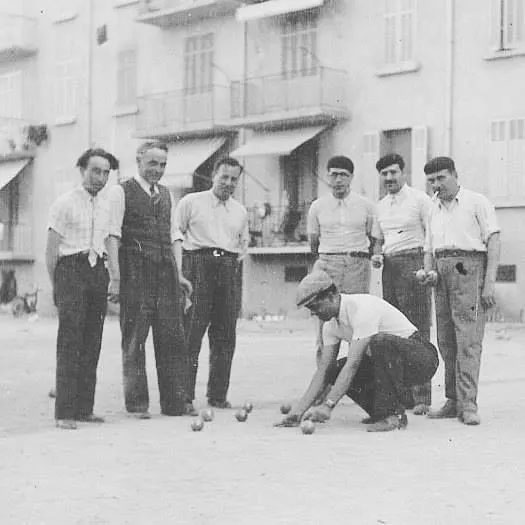What is bocce?
Bocce is a European ball game that belongs to the boules family, closely related to lawn bowls, French pétanque, and boules lyonnaise.
The sport of bocce has evolved over the years into three distinct yet similar variations of the game:
- Volo bocce, which is traditionally played with brass balls on a packed base topped with fine sand
- Raffa bocce, which is played with coloured resin-style bocce balls on a smooth sand or synthetic surface
- Pétanque, which is played with small brass bowls on a gravel or sandy surface. In this version of the game, the balls are lobbed (not rolled) to the target.
Bocce is a highly versatile sport that can be played on several flat surfaces, including clay, concrete, grass, artificial turf, and sand. In competitive games, bocce courts comprise of a flat surface of sand and crushed stone that is topped with a thin layer of white sand. This is the standard for elite bocce competitions, as these materials allow the balls to roll fast and track straight. For recreational bocce, grass is ideal and easily accessible, eliminating the need for a dedicated bocce court and all three codes of the sport can be enjoyed playing.
Bocce balls are made from different compounds, depending on the type of bocce that is played. In volo and pétanque games, the bocce balls are made from a brass composition. Unlike the balls used in lawn bowls, they are hollow inside and do not have a built-in bias. For raffa bocce, the balls are coloured and made from solid resin.
As a sport, bocce offers many social and physical benefits. It can be played casually or competitively and is accessible to people of all ages and fitness levels.
The history of bocce
Bocce has roots in ancient Rome. The game is believed to date back to 9000 BC, where stone bowls were found in Turkey. Bocce enjoyed rapid growth throughout Europe in the 1800s and became the sport of nobility and peasants alike.
The game was developed in its present form in Italy, France, and many of the European Mediterranean countries. It was the Italian migrants that introduced bocce to Australia. The sport then became popular with their descendants and the wider Australian community.
In Australia, bocce was played in backyards, streets, and inner suburb parks from the early 1900s. It became a fully-fledged competitive sport in the late 1960s, with the first Australian national championships taking place in 1970.
Bocce has gained a huge following all over the world. The sport is highly popular in America, Europe, South America, Africa, and Asia. Different countries have their own rules and play on different surfaces, but the basic aim of the sport remains the same.

How to play bocce
The basic rules of traditional bocce are as follows:
- Each player or team takes turns bowling their ball towards a target ball, also known as a jack or pallino
- Balls are to be thrown underarm and can be delivered through the air or along the ground
- Once all balls have been thrown, the team with the closest ball to the jack scores one point
- An additional point is awarded for each of their balls that are closer to the jack than the closest ball of the other team
- The first player or team to reach 13 points wins the game.
Traditional bocce can be played between two players (singles) or two teams (doubles, triples, quadruples). It is the most popular version of the sport. Other styles of bocce, such as progressive throw, precision throw and bowl throw, are more advanced games that are designed to test the speed, stamina, skill, and athleticism of players.
